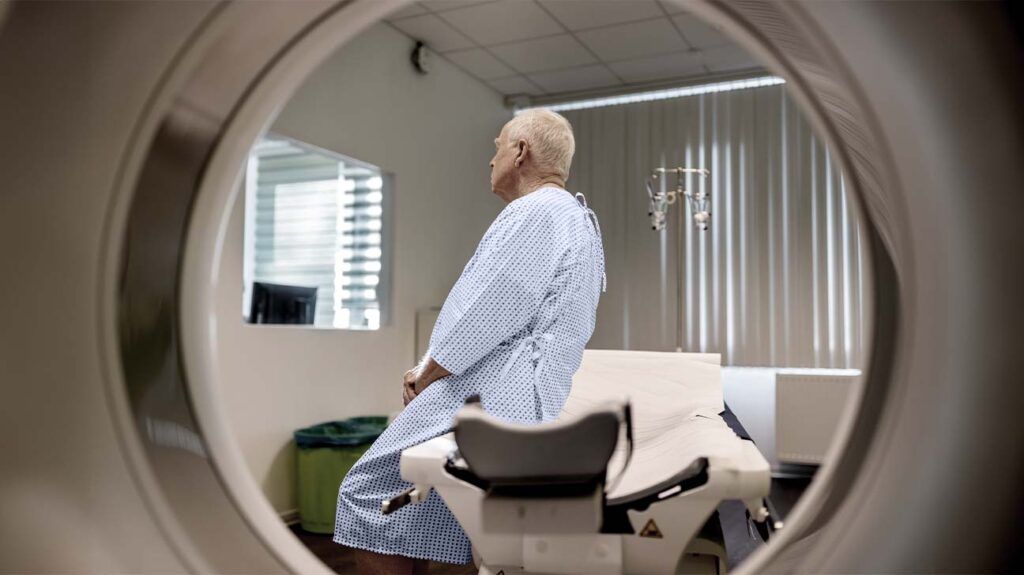Lymphoproliferative disorders are a group of diseases that cause an uncontrolled production of lymphocytes, a type of white blood cell. Some examples include non-Hodgkin’s lymphoma and certain leukemias.
When lymphocytes multiply uncontrollably, they disrupt the body’s ability to maintain a balanced immune response. A compromised immune system hinders the body’s ability to defend against pathogens, rendering someone more vulnerable to infections.
Moreover, these conditions include malignant subtypes, including lymphomas and leukemias, which are potentially life threatening.
This article explores lymphoproliferative disorders, their symptoms, diagnosis, and treatments.

Lymphoproliferative disorders are a diverse group of conditions involving the atypical and uncontrolled growth of lymphocytes. These are a type of white blood cell that plays a crucial role in the immune system.
There are three different types of lymphocytes:
- B cells: These antibody-producing cells tell other immune cells to attack invading pathogens.
- T cells: These cells use chemicals to destroy cancerous cells and cells that pathogens infect.
- Natural killer cells: These cells use enzymes to destroy cancer cells and cells with infections.
Doctors broadly classify cancerous lymphoproliferative disorders into
Lymphoproliferative disorders encompass a
B-cell lymphoproliferative disorders include:
- B-cell chronic lymphocytic leukemia
- B-cell prolymphocytic leukemia
- non-Hodgkin’s lymphoma
- hairy cell leukemia
- splenic lymphoma with villous lymphocytes
T-cell disorders include:
- Sezary syndrome
- T-cell prolymphocytic leukemia
- adult T-cell leukemia-lymphoma
- large granulated lymphocyte leukemia
- X-linked lymphoproliferative disorder
There
Symptoms of lymphoproliferative disorders vary depending on the specific type of disorder a person has. However, some common symptoms
- anemia
- weakness
- swollen lymph nodes
- spleen or liver enlargement
- elevated white blood cell counts
- atypical bleeding or bruising
- excessive bleeding
- weight loss
- night sweats
- bone pain
- rashes
- frequent infections
The cause of lymphoproliferative disorders is an issue with the mechanism that controls normal lymphocyte growth.
While the exact cause can vary depending on the specific disorder, some
Several factors can increase the risk of developing lymphoproliferative disorders. These include:
- a weakened immune system due to organ transplantation or immunosuppressive medications
- a family history of similar disorders
- exposure to certain viruses, such as HIV or the Epstein-Barr virus
People with underlying medical conditions also have an increased risk of developing lymphoproliferative disorders. These include:
- common variable immunodeficiency
- Chediak–Higashi syndrome
- Wiskott-Aldrich syndrome
- ataxia-telangiectasia
Diagnosing lymphoproliferative disorders involves a combination of the following:
- medical history
- family history
- physical examination
- blood tests
- lymph node, bone marrow, or spleen biopsies
- genetic testing
Doctors may order imaging studies to look for tumors or other signs of disease. They may include:
- X-rays
- ultrasound
- CT scans
- MRI scans
Treating lymphoproliferative disorders often involves a complex approach that doctors tailor to the individual and the disease. A treatment plan may include:
- Chemotherapy: These powerful drugs kill or slow the growth of cancerous lymphocytes.
- Stem cell transplantation: Specialized stem cell transplants involve infusing the individual with healthy donor stem cells.
- Reduction of immunosuppression: Doctors may use this approach in cases where lymphoproliferative disorders occur relating to organ transplantation. Reducing immunosuppressive medications may allow the immune system to mount a response against the disorder.
- Antiviral therapy: If the disorder is due to viral infections, antiviral therapy may help control the underlying infection and, consequently, the lymphoproliferative disorder.
The outlook for individuals with lymphoproliferative disorders varies widely. Doctors can treat some cases effectively, while others may be more challenging. To illustrate, diffuse large B-cell lymphoma has a 5-year relative survival rate of about
Conversely,
Early diagnosis and appropriate treatment can significantly improve outcomes. Regular follow-up with a healthcare team is essential to monitor the condition and adjust the treatment plan as necessary.
Lymphoproliferative disorders involve the atypical growth of lymphocytes. This group of disorders has various causes, including viral infections and genetic factors.
A person’s outlook varies depending on the specific disorder. Therefore, early detection and tailored treatment plans are critical for improved outcomes.
